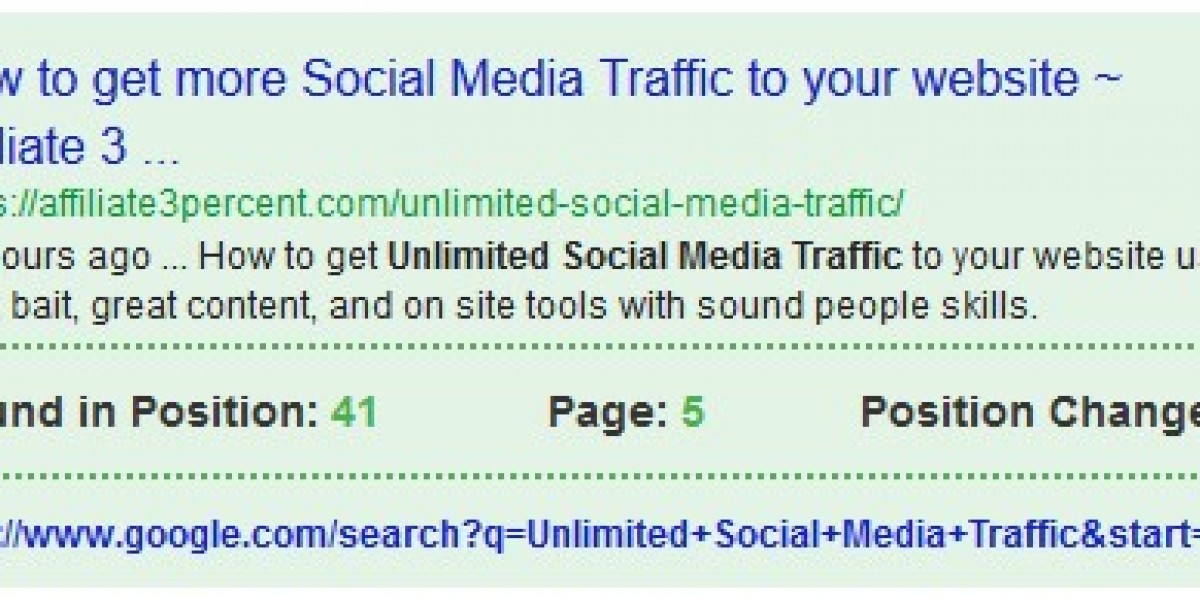Starting a blog is exciting, but without the right tools, it can feel like navigating a maze. As a newbie, you'll soon discover that the correct mix of resources makes all the difference. That's where this guide on blogging tools for newbies steps in.
Explore essential tools that will empower you to enhance your creativity, optimize your content, and grow your readership. Whether it's writing apps like Grammarly and Hemingway or SEO tools like Ahrefs, mastering these essentials will set you on the path to successful blogging. Don't get overwhelmed; with these tools, tackling your blogging journey can be straightforward and fun.
Understanding Blogging Tools
As a new blogger stepping into the blogging arena, it's essential to understand the tools available. These tools aren't just fancy add-ons. They are the building blocks that can make your blogging experience smoother, more productive, and way more enjoyable. So let's break it down and see what's in store for you.
 Photo by Pixabay
Photo by Pixabay
What Are Blogging Tools?
Blogging tools are like the toolbox for every blogger. They consist of software and applications that aid you in creating, designing, and analyzing your blog content. Without these, blogging could feel like building a house with no hammer. Here's a quick look at the different kinds of blogging tools you might use:
- Content Creation: Writing is at the heart of blogging, and content creation tools like Grammarly are essential. They help ensure your writing is polished, error-free, and engaging.
- Design: Your blog needs to look good. Tools such as Canva are great for creating stunning visuals that captivate your audience and enhance your blog's overall appeal.
- Analytics: To know how well your blog is doing, you must measure its performance. Google Analytics provides insights into your audience's behavior and how your content performs.
Benefits of Using the Right Tools
Using the right blogging tools can make you feel like a superhero in your blogging journey. They simplify complex tasks, save you time, and help you focus on what you love—writing. Here's why they matter:
- Boosted Productivity: Tools streamline the blogging process by automating repetitive tasks and improving efficiency. Imagine writing and scheduling posts without manually checking every detail. Tools handle this seamlessly.
- Enhanced Creativity: With the right resources, your imagination can run wild. Design tools inspire creativity by allowing you to easily whip up eye-catching graphics.
- Better Outcomes: By utilizing analytics, you're not just throwing darts in the dark. These tools illuminate your path, showing what resonates with your audience and what needs tweaking.
These resources can transform the way you blog by making it an enjoyable and rewarding experience. Gearing up with the right blogging tools for newbies can be like holding a map that guides you to success, and that's something every new blogger needs!
For further insights on the importance of blogging, you can check out this comprehensive guide.
Essential Content Creation Tools
Creating content for your blog is like adding seasonings to your favorite dish—it's all about getting the right mix to bring out the best flavors. With the right tools on your side, you can craft posts that are not only engaging but also visually stunning and original. Let’s dig into some crucial tools every newbie must consider.
 Photo by Suzy Hazelwood
Photo by Suzy Hazelwood
Word Processors and Editors
Among the foundational blogging tools for newbies, word processors like Google Docs and Microsoft Word are must-haves. They are like your digital pen and paper. You can write, save, and edit your posts with ease.
Google Docs: It’s cloud-based, meaning you can access your documents from anywhere, collaborate with others in real-time, and check your work for errors. With features like commenting and sharing, it's the powerhouse you need. Plus, it's free!
Microsoft Word: A classic that never goes out of style, Word provides robust editing and formatting options. It can be accessed via Microsoft Office and is particularly useful if you are working offline on detailed projects.
Both of these tools help ensure that your text is clear and error-free, paving the way for an engaging reading experience.
Graphic Design Tools
A blog without visuals is like a story without colorful illustrations. Visuals not only break up text but also help convey your message more powerfully. Here’s where tools like Canva and Adobe Spark come into play.
Canva: It's a user-friendly design tool perfect for everyone—no graphic design degree required! You can create eye-catching blog banners, social media posts, and more. Its drag-and-drop features and templates are just what beginner bloggers need to get started.
Adobe Spark: A bit more sophisticated, Adobe Spark enables you to design stunning graphics easily. It's a part of Adobe’s cloud-based offerings, allowing you to make chic visuals from anywhere. You’ll find tools for videos, web stories, and social media content, enhancing your blog’s appeal.
Images are the cherries on top of your well-baked content, and these tools ensure they’re sweet and engaging.
Plagiarism Checkers
Keeping your content genuine is crucial. Plagiarism checkers like Grammarly and Copyscape make sure your writing is original and void of any accidental copying, which can harm your credibility.
Grammarly: Beyond grammar and spell check, Grammarly has a plagiarism checker that scans your document against billions of web pages. It’s an essential tool to ensure your hard work is truly your own.
Copyscape: This is a comprehensive tool that detects duplicate content online. If originality is your top priority, Copyscape will quickly alert you to any existing content your work might mirror.
Using these tools is akin to having an editor by your side, assuring every word you publish is authentically yours.
These essential tools are your best allies in your blogging journey. Whether it’s crafting the perfect sentence, designing a captivating graphic, or certifying your content’s uniqueness, each tool provides a stepping stone toward blogging success. Dive in, experiment, and let your creativity flow!
SEO and Keyword Research Tools
In the fast-paced world of blogging, knowing your audience and speaking their language is crucial. For beginners stepping into the blogosphere, this means understanding how search engines work and what keywords can make your content shine. Utilizing SEO and keyword research tools can feel like discovering the hidden key to unlock a treasure trove of blog visibility. Let’s dive into some tools that can make this process smoother.
Keyword Research Tools
Finding the right keywords is like fishing for the perfect bait; once you get it right, you're bound to catch the attention you're looking for. Here are a few tools that can help newbies in uncovering those golden keywords:
Ubersuggest: Created by Neil Patel, Ubersuggest gives you real insights into the strategies working in your niche. It's perfect for finding the right terms to target for visibility.
Jaaxy: Known for its user-friendly interface, Jaaxy helps bloggers find keywords that are competitive yet achievable, focusing on long-tail keywords that are often less crowded.
Google Keyword Planner: This is a great starting point for anyone new to blogging. It's free and offers insights directly from Google, showing you how often keywords are searched and how those searches have changed over time.
Embarking on a keyword expedition? These tools are your compass, ensuring that your content is seen by the audience you're writing for.
SEO Optimization Tools
Optimizing your blog for SEO is like polishing a diamond; without it, no one will notice it glistening amidst the rubble. Thankfully, there are tools designed to keep your blog shining brightly on the search engine results page:
Yoast SEO: Particularly helpful for Wordpress users, Yoast guides you through the optimization process by focusing on both technical and content SEO. It provides insights on readability and suggests ways to improve your blog’s performance.
SEMrush: Not just a keyword research tool, SEMrush delves deeper into your SEO analytics, offering competitive research and keyword tracking, making it a versatile tool for bloggers.
SEO PowerSuite: This is an all-in-one SEO toolkit, covering everything from site audits to link management, catering to more serious bloggers looking to advance their SEO skills.
These tools act like lighthouses, guiding you to make the necessary tweaks to become more visible, ensuring your blog doesn't just become another needle in the haystack.
As a new blogger, equipping yourself with these SEO tools can be your secret weapon in conquering the digital landscape. Photo by Ivan Samkov 
Website Building and Hosting Platforms
Starting a blog can feel a bit like standing at the base of a mountain, looking up at all the different paths you could take. One of the first big steps in your blogging journey is choosing the right platform and hosting service. It's not just about building a blog; it's about creating a space that's easy to manage and grow. Here's how to pick the right tools that fit your newbie blogging needs.
Choosing the Right Blogging Platform

The foundation of your blogging journey starts with selecting the platform where your blog will live. There are quite a few options out there, but for beginners, ease of use is key. Let's look at some popular choices:
WordPress: Often seen as the go-to choice for many bloggers, WordPress offers a balance of simplicity and flexibility. It's highly customizable with plugins and themes. However, setting it up might require a bit of a learning curve if you want to dive into more advanced features.
Wix: Known for its drag-and-drop design, Wix simplifies the process for beginners who prefer a more visual and intuitive approach. It's user-friendly and requires minimal technical skills, making it a great starting point.
Blogger: Google's blogging platform, Blogger, offers basic tools for free, perfect if you're just starting to dip your toes into blogging. It's simple and integrated with Google services, but lacks the extensive customization options that WordPress and Wix provide.
Choosing the right one often depends on what you value most—Be it control, simplicity, or cost. Each option is like choosing between a paint-by-numbers kit and a blank canvas. Decide how much creativity and complexity you want in your blogging toolkit.
Hosting Providers for New Blogs
Beyond the choice of platform, you need a hosting provider—the service that houses your blog on the internet. Here are a couple of reliable options that come highly recommended, especially for those starting out:
Bluehost: Widely recommended by many blogging guides, Bluehost is great for WordPress users offering a free domain for the first year and 24/7 support. It's known for being affordable and easy to set up, making it a favored choice for new bloggers.
SiteGround: Known for excellent customer support and reliability, SiteGround offers managed WordPress hosting, which means they take care of site security, speed, and updates for you. Many appreciate SiteGround for its performance and commitment to keeping your blog running smoothly.
Other credible options like DreamHost and HostGator are also worth considering, each offering unique features and pricing plans. Choosing a provider is like picking the right backpack for a hike—it needs to carry your load efficiently and securely.
In short, the platform and hosting provider you choose will set the stage for your blogging experience. By understanding your needs and preferences, you can make informed choices that simplify your entry into the world of blogging while paving the way for future growth. Keep in mind that whatever you choose, you're in charge of your blog's adventure, from the first post to a growing audience.
Email Marketing and Audience Engagement Tools
Engaging with your audience is a crucial part of blogging, especially if you're just starting out. Building relationships through effective communication will pave the way for growing your blog's reach. Let's explore some of the essential tools you'll want in your toolbox as you embark on this blogging journey. In this section, we'll cover email marketing platforms that help you grow your audience and social media management tools that keep your content flowing smoothly across platforms.
Email Marketing Platforms
 Photo by Eva Bronzini
Photo by Eva Bronzini
Email marketing isn't just a helpful tool—it's like having a direct line to your audience's inbox. Platforms like Mailchimp and ConvertKit are popular for managing email lists and campaigns. They let you send newsletters or special updates that keep your readers in the loop.
These platforms are user-friendly and perfect for beginners. Mailchimp, for instance, offers a drag-and-drop email builder that makes it easy to create beautiful emails without needing coding skills. Meanwhile, ConvertKit offers customizable signup forms to help you gather more subscribers efficiently. Both platforms are known for their robust features like email automation, analytics, and integration options, making them essential blogging tools for newbies aiming to nurture their audience connections.
With email marketing, you’re not just sending messages; you’re building relationships. It's like watering a garden; regular engagement helps your audience grow and flourish.
Social Media Management Tools
Staying active on social media can sometimes feel like juggling several balls at once. That's where tools like Buffer and Hootsuite can make a difference. They help you schedule and manage your social media posts, so you don’t have to be glued to your screen all day.
These tools are all about convenience and efficiency. Buffer allows you to plan posts for multiple accounts at once, analyze their performance, and adjust your strategy accordingly. On the other hand, Hootsuite offers advanced scheduling options and in-depth analytics that are perfect for those looking to dive deeper into social media marketing.
Using these platforms is like setting a timer on a slow cooker; you prepare your content, set the schedule, and let it do the work. It ensures your voice is heard consistently, even when you’re busy with other tasks.
Through these tools, audience engagement becomes less of a task and more of a well-oiled routine, helping new bloggers like you stay connected with your followers without the hassle.
Analytics and Performance Tracking Tools
When starting a blog, it's easy to get caught up in writing content and not enough attention is given to tracking how well your blog is doing. If blogging is supposed to help you reach out and connect with an audience, then measuring how effective your blog is can't just be an afterthought. That's where analytics and performance tracking tools come in. They act like the compass guiding your blog to success, showing where you're hitting the mark and where you might be veering off-course.
Using Google Analytics

Photo by Pixabay
Setting up Google Analytics is a must for anyone serious about blogging. Why? Because it tells you who's visiting your blog, what they're reading, and how they found you. It's like having a backstage pass to see what happens behind the curtain when someone visits your site.
To get started with Google Analytics, first create an account. Once inside, follow these steps:
Set up a Property: This is where you add your website's information. Give it a name and mention your blog's domain.
Install Tracking Code: Google will provide you with a piece of code to add to your blog. This is what tracks your visitors. Here's a detailed guide to help you do this step-by-step.
Explore and Analyze: Once the setup is complete, start exploring the diverse features. Learn about your audience demographics, check the bounce rate, and see which posts are resonating most with your readers.
These insights are invaluable for understanding if you are reaching the right audience and what content is keeping them engaged. For a more in-depth how-to, check out this detailed walkthrough.
Monitoring Traffic and Engagement
While Google Analytics is fantastic, it can sometimes be a little overwhelming. That's where tools like Jetpack come in. Jetpack is user-friendly and works well if you're using WordPress.
Jetpack's Stats feature gives you a clear view of your site's performance—no need to get lost in a sea of complex data. It simplifies metrics into easily digestible insights:
- See how many visitors your blog attracts.
- Monitor daily, weekly, and monthly trends.
- Identify which posts are popular and keep an eye on the comments section.
Using Jetpack feels like having a personal blog assistant. It watches over your blog 24/7, allowing you to focus on creating content. If you're curious about leveraging Jetpack, read this guide to learn more.
Ultimately, these tools are about empowerment. They help you make confident decisions about your blog's direction, ensuring you're not just writing into a void. By paying attention to these metrics, you can adapt and refine your approach, and ensure your blogging journey stays on the path to success.
Conclusion
Blogging tools for newbies aren't just resources; they're your gear for crafting engaging content and reaching your audience effectively. These tools offer a streamlined way to polish your blog, understand your readers, and grow your message.
Starting a blog can feel overwhelming, but these essentials make it more accessible and enjoyable. Dive in, experiment, and see what fits your unique blogging style. Your voice deserves to be heard.
Are you ready to lift your blogging game? Explore these tools, let your creativity shine, and share your journey with the world. Feel free to comment below with your experiences or favorite tools that have helped you.
Thank you for reading, and may your blogging adventure be both fulfilling and successful!


